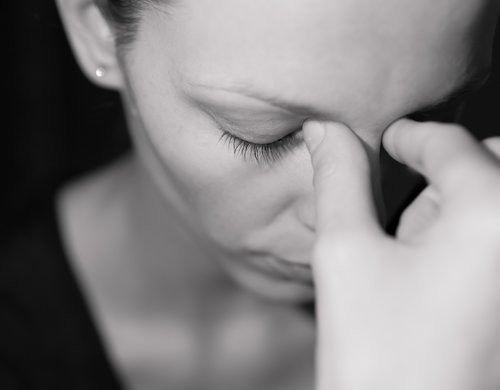Nicolas Duchemin

"We worked smoothly but the next day I felt like I had moved three times"
"I was tired and sore, like after a marathon"
Do these phrases sound familiar to you?
. . . . . . . . . .
Following an osteopathic treatment, it sometimes happens that you feel, a few hours or a few days after the consultation, various side effects, ranging from slight fatigue to frankly uncomfortable pains (these may be close to or at a distance from the treated area, and not always related to the reason that led you to consult your osteopath). This can happen even though a real relief of the symptoms was felt just after the consultation. But what is happening?
. . . . . . . . . .
During the treatment, the therapist has come to release one or more tensions that he will have been able to relate to the symptoms expressed by the patient: such a solicitation, even very gently, of one or more structures (connective tissues, muscles, tendons, viscera, fascias...) will force the body to react, to adapt, not only under the hands of the practitioner, but also during the days that follow the treatment. For example, the release of an ankle will lead to a lasting change in posture and walking; work on the liver will improve local blood circulation within the organ and increase its metabolic activity, etc... These processes are energy consuming and the gradual return to health may then go through phases of fatigue or discomfort. In addition, the therapist may have had to gently mobilize areas of acute or chronic inflammation in order to achieve relaxation. This sometimes causes a temporary increase in inflammation. Locally, there is a gain in amplitude or tissue quality, but the inflammation will disappear more slowly.
. . . . . . . . . .
Moreover, in people who consult for symptoms that have been present for a long time and for which the body has created multiple compensations over the years, or in patients with a rich history of traumas or various adaptations, it is not rare that the osteopath, by lifting a first chain (or "layer") of dysfunctions, lets another, older chain express itself, sometimes quietly, sometimes in a less comfortable way! It is also possible that the inflammation at the time of the visit is such that the practitioner was not able to release all the blockages during the first treatment and that they express themselves once the inflammation has passed. It will then be necessary to continue the treatment, letting the body do its work between the two sessions.
. . . . . . . . . .
This temporary way for the body to integrate the disappearance of tissue dysfunctions and to balance itself can take several forms, isolated or associated:
an increase in the symptoms that led to the consultation, but also:
fatigue
aches and pains
headaches
digestive problems
migrating joint pain (e.g. from shoulder to mid-back/knee, etc.)
neuralgia
skin reactions
.....
. . . . . . . . . .
The list is not exhaustive, but what we must keep in mind is that these discomforts when they occur are temporary (a few hours to several days), and testify to the transitory activity during which the body works to find a balance that has been lost for several days/months/years! This activity most frequently results in small areas of local inflammation leading to the above mentioned symptoms. Rest, patience, confidence in the body's ability to regain its health, as well as good communication with your osteopath are therefore indispensable assets in this adjustment phase.
It should be noted that these potential adaptations to the treatment vary in time and intensity depending on the reason for consultation, its acute or chronic nature, its age, the patient's lifestyle (physical activity, postures/efforts at work, diet, sleep, stress)... These are important data to take into account!
At the end of the consultation, the therapist systematically explains the possibility of these discomforts and the steps to follow if they persist for more than a few days (exercises, stretching, advancing the next appointment...). In all cases, it is strongly recommended to contact your osteopath (by phone or email) who, after discussing with you the effects felt, will be able to take the time to guide you in the best possible way for the continuation of the treatment.
. . . . . . . . . .
Nicolas Duchemin, Osteopath D.O.
nicolas.duchemin@cliniquealtermed.com


